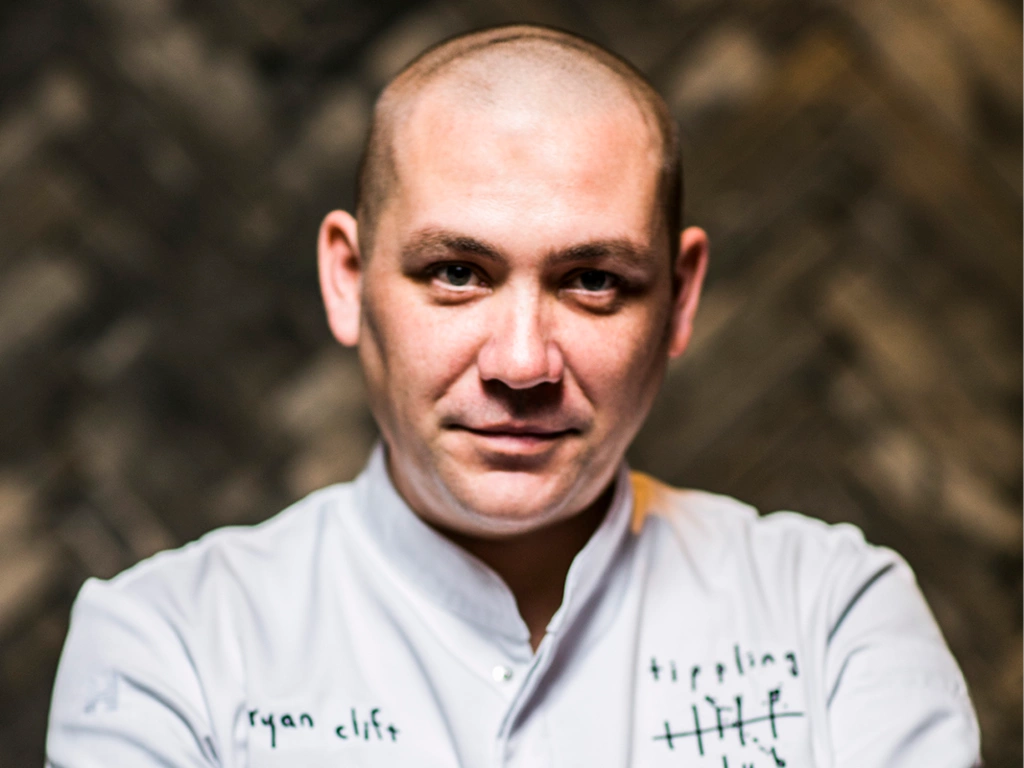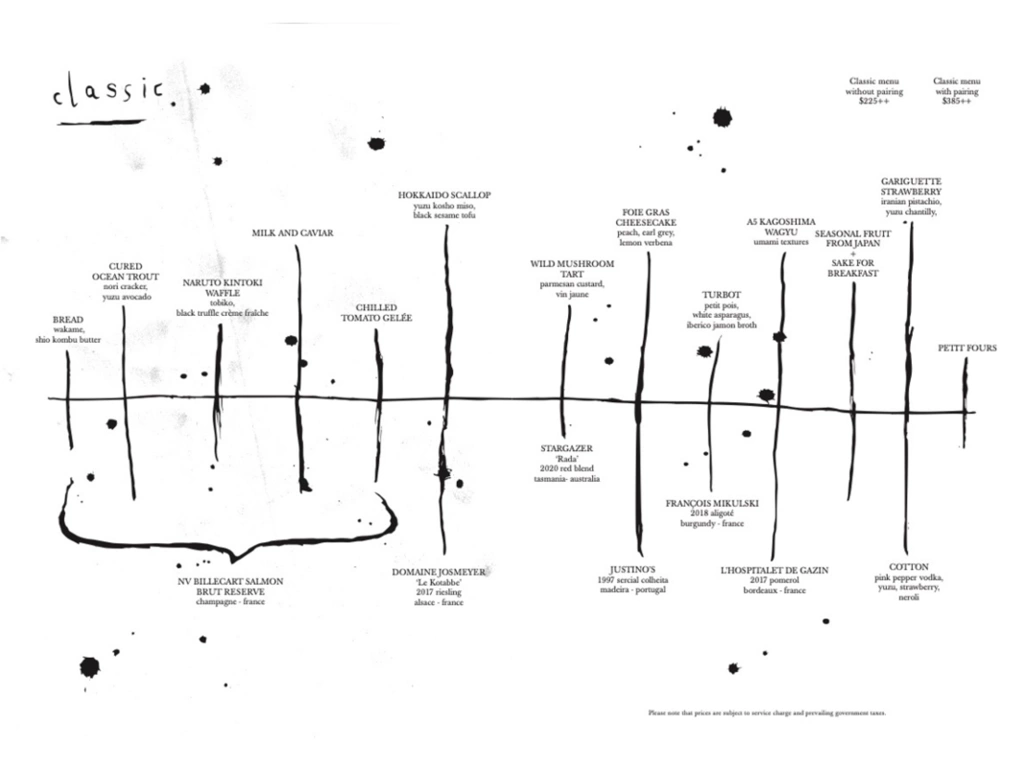Inside the creative process of Singapore’s Tippling Club
How do the bartenders and chefs of the world’s best bars and restaurants come up with ideas? More importantly, how do they execute them?
Singapore’s Tippling Club chef and owner Ryan Clift and head bartender Andrew Loudon are no strangers to accolades such as the World’s 50 Best Bars and the World’s 50 Best Restaurants. They recently hosted a workshop for Scholars within The Blend’s The Scholarship program, aimed at educating and inspiring and showing how they bring their innovative and creative approach to bear on some truly special food and drink.
Here’s what we learned.

Tippling Club has been pushing boundaries a long time
Tippling Club has been pushing the boundaries of fine dining and great cocktailing for more than a decade. Clift opened Tippling Club in Singapore in 2008 with Melbourne artist-cum-bartender Matt Bax; the restaurant found fame quickly, thanks to the reputations of both Clift, who had previously worked at Vue de Monde, and Bax (who owned groundbreaking Richmond bar, Der Raum).
Bax and Clift parted way in 2010, with Clift taking on the business solo and moving it to a three unit-long shophouse in Tanjong Pagar, on the edge of Singapore’s Chinatown.
There has been a succession of notable and influential head bartenders take the reins of the bar at Tippling Club since Bax. Joel Fraser took over in 2009, leaving in 2012 to open the influential Cufflink Club in Singapore (he’s since gone on to start his own spirits brand).
Australia’s own Luke Whearty ran the bar in 2012, before moving around the corner to open his own bar, Operation Dagger. He has since moved back to Australia, opening BYRDI in Melbourne (and being a regular fixture of The Blend’s of the World training programs).
Another Australian, who cut his teeth at Gingerboy and Black Pearl in Melbourne, Zachary de Git, took the reins in 2013 before beginning life as a jet setting spirits brand ambassador.
Kamil Foltan took over in 2015, but it was in 2016 with the arrival of Joe Schofield where things at the bar took an unprecedented turn, with the launch of the Sensorium menu.
The cocktail menu receives global acclaim
Joe Schofield’s Sensorium cocktail menu was a pivotal moment for the drinks at Tippling Club.
“[That was] when we took a cocktail menu from a piece of paper to three dimensional,” Loudon said.
The Sensorium menu saw Schofield (the head bartender at the time) and Clift work with a fragrance company to design the menu.
The Sensorium menu was a first for cocktail menus around the globe. To choose a cocktail from the list the guests would need to smell each drink first. But how?
The menu consisted of a series of fragrance testers — a fancy version of the type you might find being offered in the perfume section of a department store — with the aroma of each drink sprayed upon a tester. Guests would waft these under their noses, and pick the drink based upon the fragrance they liked best.
To achieve this Schofield and Clift created the cocktails and and sent them to International Flavours & Frangrances (IFF). IFF then put these drinks into a mass spectrometer to scientifically determine the aromas of the drink; they made that into a perfume and sent them back to Tippling Club.


The Gummy Bear menu
The world’s first edible cocktail menu followed. The Gummy Bear menu debuted four or so years ago, and it’s still how many people know the bar at Tippling Club. Working again with IFF, this time the cocktails were made to convey a feeling or aspiration: the Happiness cocktail, being one of them, was garnished with a tab with a smiley face on it; Knowledge was garnished with dehydrated rice paper sheet crinkled up to look like aged parchment paper because, as Loudon says, “all knowledge begins with paper.”
The difference this time was that the guests chose their cocktails by sampling a dozen-of different gummy bears, each packed with the flavours of the drink.
Schofield-era menus
Each of these Schofield-era menus landed the bar among the top 10 for World’s Best Cocktail Menu at Tales of the Cocktail’s Spirited Awards in 2017 and 2018.
Loudon took over from Schofield in 2018 and, wary of drumming a good idea into the ground, made the switch back to a more traditional paper-style menu; The Guide to Modern Drinking was born.
Inspired by the king of chefs (and the chef of kings) Auguste Escoffier, The Guide To Modern Drinking was inspired by Escoffier’s own dishes in his book, A Guide To Modern Cookery. These drinks reflect Loudon’s approach and beliefs about the way drinks should be put together.
“Drinks should always be delicious and at a high level of quality,” Loudon says of Tippling Club’s offerings. “Then for a little tongue-in-cheek, a little wow factor, we put extra work into the garnishes.”


Storytelling cocktails
The story is a critical component of the way Tippling Club puts together its drinks, giving guests a reason for the cocktail’s existence. But it’s not a traditional, Little Red Riding Hood kind of story approach that Loudon takes.
Whereas traditionally, a story is linear — it begins with exposition, then rising action which leads to a climax, falling action, leading to a resolution, Loudon describes what they do at Tippling Club as non-linear storytelling.
“[It’s] many intertwining little stories that go into the overarching story,” he says.
The story gmight begin with the name, a style of drink, and ingredient; that will be built upon by the introduction of other characters by way of additional ingredients. Each additional ingredient has its own story, one the bartenders at Tippling Club can retell to their guests. The sweet, the sour and the main spirit are all opportunities to tell more stories to the guest; the amplifiers, be they techniques or elements likes sandalwood (one of Loudon’s favourite ingredients) all contribute to the overarching narrative. Serving the drink to the guest is its resolution.
Tippling Club’s timeline approach to mind-mapping dishes and drinks
How does this mind-map approach work?
When conceptualising the possibilities for a new dish to go on his tasting menu, Clift will bring out a piece of blank paper, and with a Sharpie, draw a horizontal timeline across it. He’ll then cross that line with vertical dashes.
At the start, on the left of the horizontal line, he’ll put down an ingredient he wants to work with — say, foie gras. Then, on the dashes above the horizontal timeline, he’ll list the ingredients that come to mind that play with ingredient.
Below the horizontal line, they’ll list the ways they can prepare the ingredient.
So each vertical line dissecting the horizontal timeline lists the ways in which the ingredient (which sits north of the timeline) can be prepared (the list of which sits south of the timeline), whether it’s fresh, freeze-dried, dried, fermented and so on (or, when it comes to the bar, in syrups and distillations and so forth).
What they’re creating is a mind map of the creative and conceptual process for each dish. These mind maps are then given to the bar when it comes time to create the drink pairings, with a readymade list of ingredients, flavours and preparations to inspire the bar to do their thing.

What’s next for Tippling Club?
Clift and Loudon presented their workshop for The Scholarship in the midst of their fourth lockdown in Singapore, but they haven’t allowed the pandemic to stifle their creativity. Throughout lockdown, they found new ways to engage and delight their guests at home (the Gummy Bear menu made a reappearance), and they last month they released their latest cocktail list, The Guide To Modern Drinking Vol. II.
